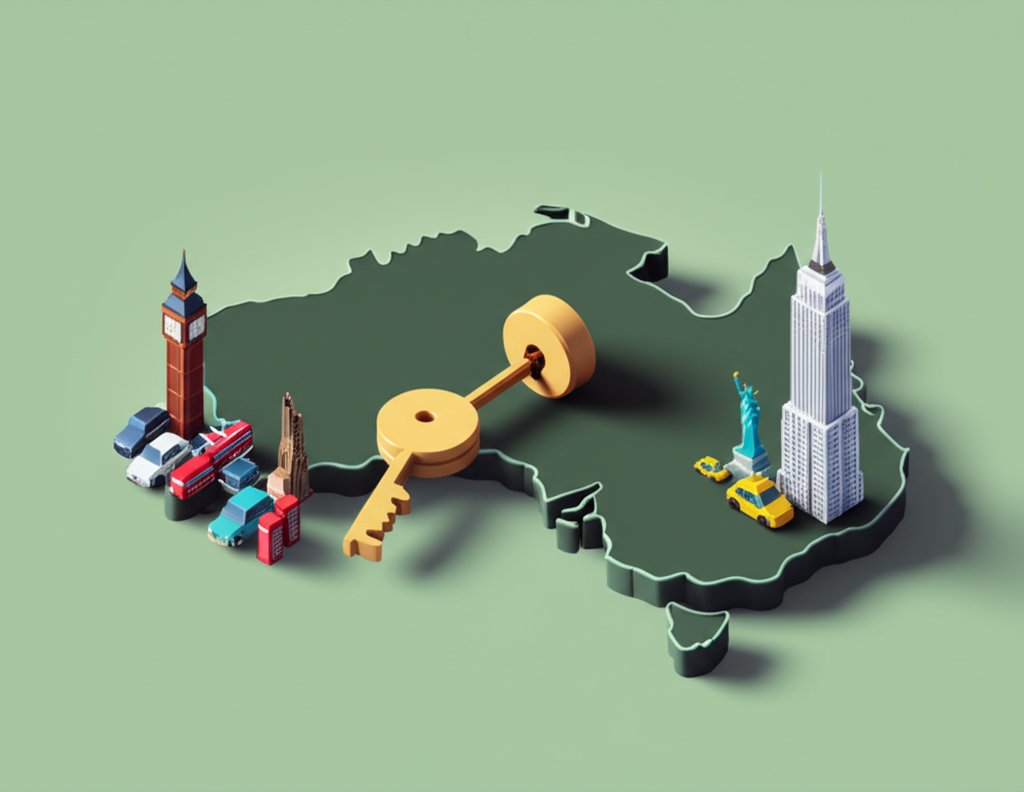Untuk gambaran yang lebih besar dan konteks penuh, pastikan Anda membaca panduan utama kami tentang Rupert Murdoch Biography: The Tumultuous Life Of A Media Titan.
Understanding Rupert Murdoch’s influence requires knowing the scope of his media holdings. His journey from a small Australian newspaper to a global media titan is a story of strategic acquisitions and calculated risks, resulting in a portfolio encompassing news, entertainment, and digital platforms. This article will dissect the key companies owned by Murdoch throughout his career, highlighting the evolution and impact of his media empire.
At a glance:
- Explore the evolution of Rupert Murdoch’s media holdings, from his first Australian newspapers to global giants.
- Understand the structure and key players within News Corporation and Fox Corporation.
- Identify the pivotal acquisitions that shaped Murdoch’s media empire.
- Learn about the controversies and restructurings that impacted Murdoch’s companies.
- Gain insight into the current state and future direction of Murdoch’s media interests after his transition.
From Adelaide to Global Domination: Murdoch’s Early Acquisitions
Rupert Murdoch’s media journey began in 1952 with the inheritance of the Sunday Mail and The News in Adelaide, Australia. These weren’t just handed over; Murdoch transformed The News into a sensationalist tabloid, a strategy that significantly boosted circulation. This early success became a blueprint for future acquisitions and expansions. Consider this the “proof of concept” stage, where he refined his approach to news and readership.
The 1960s marked further expansion within Australia. Murdoch acquired newspapers in Perth and Sydney, including the Sunday Times and the Mirror. A key move during this period was the establishment of The Australian, a national daily newspaper, demonstrating his ambition to influence national discourse.
Breaking into Britain and America: Expansion Beyond Australia
Murdoch’s ambition wasn’t limited to Australia. In 1969, he set his sights on the British market, acquiring the News of the World in London. He followed this with the acquisition of The Sun in 1970. He replicated his previous strategy, focusing on crime, sex, and sports reporting to attract a wider audience and increase circulation. This aggressive approach disrupted the established British media landscape.
The next frontier was the United States. In 1973, Murdoch entered the U.S. market by purchasing the San Antonio News (later Express-News). He then introduced the Star, a national weekly tabloid, in 1974. The 1976 acquisition of the New York Post was a landmark moment, giving him a foothold in one of the world’s most important media markets. These moves were about more than just owning newspapers; they were strategic investments in shaping public opinion and influencing political narratives. To read the Murdoch biography here, delve into the motivations and context behind these pivotal decisions.
Building News Corporation: A Global Media Juggernaut
In 1979, Murdoch consolidated his diverse holdings under News Corporation Ltd. (News Corp), a global media holding company. This move signified a shift from individual acquisitions to building a cohesive media empire.
The 1980s and 1990s saw a period of intense acquisition, encompassing radio and TV stations, film and record companies, and book publishers. A pivotal moment was the 1985 acquisition of Twentieth Century-Fox Film Corporation and a group of independent TV stations, which were then used to create the Fox network. This challenged the dominance of the established networks (ABC, CBS, and NBC) and introduced a new player to the American television landscape.
HarperCollins Publishers was formed in 1990, consolidating several publishing companies under the News Corp umbrella. In 1989, Murdoch launched Sky Television in Britain, which merged to become British Sky Broadcasting (BSkyB) in 1990 (later renamed Sky). This move expanded his reach into satellite television, providing a platform for delivering content directly to consumers.
Further expansion came with the 1993 purchase of Star TV, a pan-Asian television service, extending his media empire into the Asian market.
The Digital Age: Myspace and Beyond

Murdoch recognized the potential of the internet early on. In 2005, News Corp acquired Intermix Media, the owner of Myspace.com. While Myspace’s dominance eventually waned, this acquisition highlighted Murdoch’s willingness to invest in emerging digital platforms.
A significant acquisition in the news sector was the 2007 purchase of Dow Jones & Company, publisher of The Wall Street Journal, for $5 billion. This added a prestigious financial news outlet to News Corp’s portfolio.
Phone Hacking Scandal and Restructuring: Navigating Crisis
The 2011 phone hacking scandal involving News of the World presented a significant challenge to Murdoch’s empire. The newspaper was shut down, and Murdoch faced intense scrutiny, even testifying before British MPs. The scandal led to a period of reflection and ultimately, restructuring.
In 2013, News Corporation split into two separate entities: News Corp, focusing on publishing, and 21st Century Fox, focusing on television and media. This split was intended to separate the more controversial publishing assets from the higher-growth television and entertainment businesses.
Disney Acquisition and the Rise of Fox Corporation
In 2017, Murdoch agreed to sell most of 21st Century Fox to Disney for approximately $71 billion, a deal that closed in 2019. This marked a significant shift in Murdoch’s empire, with the majority of his film and entertainment assets being transferred to Disney.
Following the Disney acquisition, Fox News and other TV channels became part of the new Fox Corporation. This new entity focused on news and broadcasting, with a strong emphasis on Fox News as its flagship asset.
Current Landscape: News Corp and Fox Corporation

Today, the media empire once solely controlled by Rupert Murdoch is divided between News Corp and Fox Corporation.
- News Corp includes:
- The Wall Street Journal
- New York Post
- The Times (UK)
- The Australian
- HarperCollins publishers
- News UK
- Foxtel (Australian pay-TV)
- Fox Corporation includes:
- Fox News
- Fox Business
- Fox Broadcasting Company
- Fox Sports
The Murdoch Succession: A New Era
In 2023, Rupert Murdoch announced his retirement as chairman of both News Corp and Fox, with his son Lachlan Murdoch slated to become sole chair. This marks a significant transition in leadership and raises questions about the future direction of these media companies.
Practical Playbook: Navigating Murdoch’s Media Influence
Understanding the structure of Murdoch’s media empire is crucial for:
- Media consumers: Recognizing the potential biases and perspectives presented by different outlets.
- Advertisers: Making informed decisions about where to allocate marketing budgets.
- Journalists: Navigating the competitive media landscape and understanding the ownership structures of different publications and networks.
- Policy makers: Evaluating the potential influence of Murdoch’s media companies on public opinion and policy debates.
Steps to analyze a Murdoch-owned media outlet:
- Identify the ownership: Determine if the outlet is owned by News Corp or Fox Corporation.
- Assess the content: Analyze the content for potential biases or perspectives.
- Consider the target audience: Understand the demographic and psychographic characteristics of the outlet’s audience.
- Evaluate the impact: Consider the potential impact of the outlet’s coverage on public opinion and policy debates.
Decision Tree: Understanding Media Ownership
Start –> Is the media outlet a newspaper or book publisher?
Yes –> Is it owned by News Corp (e.g., WSJ, NY Post, HarperCollins)?
Yes –> Potential for conservative-leaning business/political coverage.
No –> (Other Media Owner)
No –> Is the media outlet a TV network?
Yes –> is it Fox News, Fox Business, or Fox Broadcasting?
Yes –> Potential for conservative-leaning news/entertainment.
No –> (Other Media Owner)
Quick Answers: Common Questions about Murdoch’s Media Empire
Q: How did Murdoch build his media empire so quickly?
A: Through aggressive acquisitions, a focus on sensationalist content, and a willingness to take risks. He also understood how to leverage technology and new platforms to reach wider audiences.
Q: What impact has Murdoch’s media empire had on politics?
A: Murdoch’s media outlets have been accused of promoting conservative viewpoints and influencing political debates. His ownership has given him a powerful platform to shape public opinion and advocate for specific policies.
Q: How has the split between News Corp and Fox Corporation affected the media landscape?
A: The split has created two distinct entities with different focuses. News Corp is primarily focused on publishing, while Fox Corporation is focused on news and broadcasting. This has allowed each entity to pursue its own strategic priorities.
Q: Is Lachlan Murdoch likely to continue his father’s legacy?
A: While it remains to be seen exactly how Lachlan Murdoch will lead News Corp and Fox Corporation, he is expected to maintain a similar strategic direction, focusing on news and conservative commentary. However, he may also bring his own perspectives and priorities to the role.
Actionable Close: Understanding and Adapting to the Media Landscape
Rupert Murdoch’s media empire has significantly shaped the global media landscape. By understanding the history, structure, and key players within News Corp and Fox Corporation, you can better navigate the complex world of media ownership and make more informed decisions about the information you consume. Whether you’re an advertiser, journalist, or media consumer, understanding Murdoch’s legacy is essential for operating effectively in today’s media environment.










